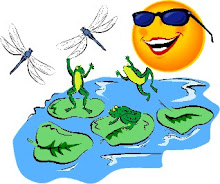Pond Market Winter Check List Guide for Ponds
Fall has passed and Winter is just around the corner.
What do you do to protect your Pond from the harsh elements and the wrath that Mother Nature can bring us sometimes?
Below is a great Winter Checklist Guide.
Pond Plants
-Prune dead leaves (leave at least 3 or 4 inches of stems)
-Move hardy marginal Pond Plant into deeper water (several inches below the freezing line)
-Bring tropical marginal Pond Plant inside, store by a window and keep very moist all winter (some leaves will wilt but the plant will perk back up in the Spring)
-Check the cold hardiness of your Pond Plants
-Check the USDA Hardiness Map for your area
-Watch the Pond Plant Winterization Seminar Video
Pond Fish (Koi, Goldfish, Golden Orfe, etc)
-Switch to Cool Weather Pond Fish Food once the water temperature of the Pond drops below 60 degrees Fahrenheit (Pond Fish do not have a stomach and their digestion slows which can lead to impaction if food with too much protein is fed in cooler water)
-Keep a Pond Thermometer in the Pond to closely monitor water temperature
-Stop feeding the Pond Fish once the water temperature drops below 48 degrees
-Add Pond Salt & Koi TLC to increase the slime coat, help ward off parasites & disease & reduce stress
-Watch the Pond Fish Winterization Seminar
Pond Filters
-Thoroughly clean the Pond Filter
-Inspect the Pond Filter for any wear or damage (it is best to order Pond Filter Replacement Parts now, so the Pond Filter is ready to go in the spring)
-Submersible Pond Filters & Pond Filters without UV should be disconnected & stored in a frost free area
-External Pond Filters w/UV should be stored in a frost free area if you plan to turn it off during the winter
-Watch the Pond Filter Winterization Seminar
Pond Pumps
-Thoroughly clean the Pond Pump
-Inspect the Pond Pump for wear and damage (order Pond Pump Replacement Parts now so it is ready for spring)
-Move the Pond Pump well below the freezing line if it will be left running
-Take the Pond Pump inside if it will be turned off
-Watch the Pond Equipment Winterization Seminar
Pond Water Quality
-Use a Pond Fish Net or Skimmer Net to scoop out dead leaves & other debris on the pond bottom
-Change 1/3 of the Pond Water (be sure to use de-chlorinator)
-Test the Pond Water for pH level, Ammonia and Nitrite
-Make further slow water changes if Ammonia and Nitrite are present
-Adjust the pH level to within 6.8 - 8.0
-Add cool weather Beneficial Bacteria to digest any left-over leaf debris and organic waste (this goes a long way to avoiding a complete pond draining in the spring)
-Use a Barley Product to inhibit stringy growth on pond rocks, waterfall, liner and other water features
-Use Restor to clean existing stringy and slimy growth off the waterfall, rocks, liner and pond plants
Pond Winterization Equipment
-Install a Pond De-Icer to keep a hole in the ice on the Pond surface to let toxic gases escape (carbon monoxide produced by the Pond Fish)
-Use a Pond Air Pump in Ponds with Koi or high Pond Fish Populations to ensure sufficient oxygen when the Pond freezes over
-Cover the Pond with Pond Netting to keep out leaves and protect the Pond Fish from predators
Just a place to talk about Garden Ponds, Koi Ponds, Water Gardens, and other Water Features. My yard has three big Garden Ponds: one Koi Pond, one Goldfish Pond and one Water Garden. What is the difference, you ask? Read on.....
Subscribe to Newsletter
About Me

- PondExpert
- In the Garden Pond and Water Garden business for many years and loving every minute of it!
No comments:
Post a Comment